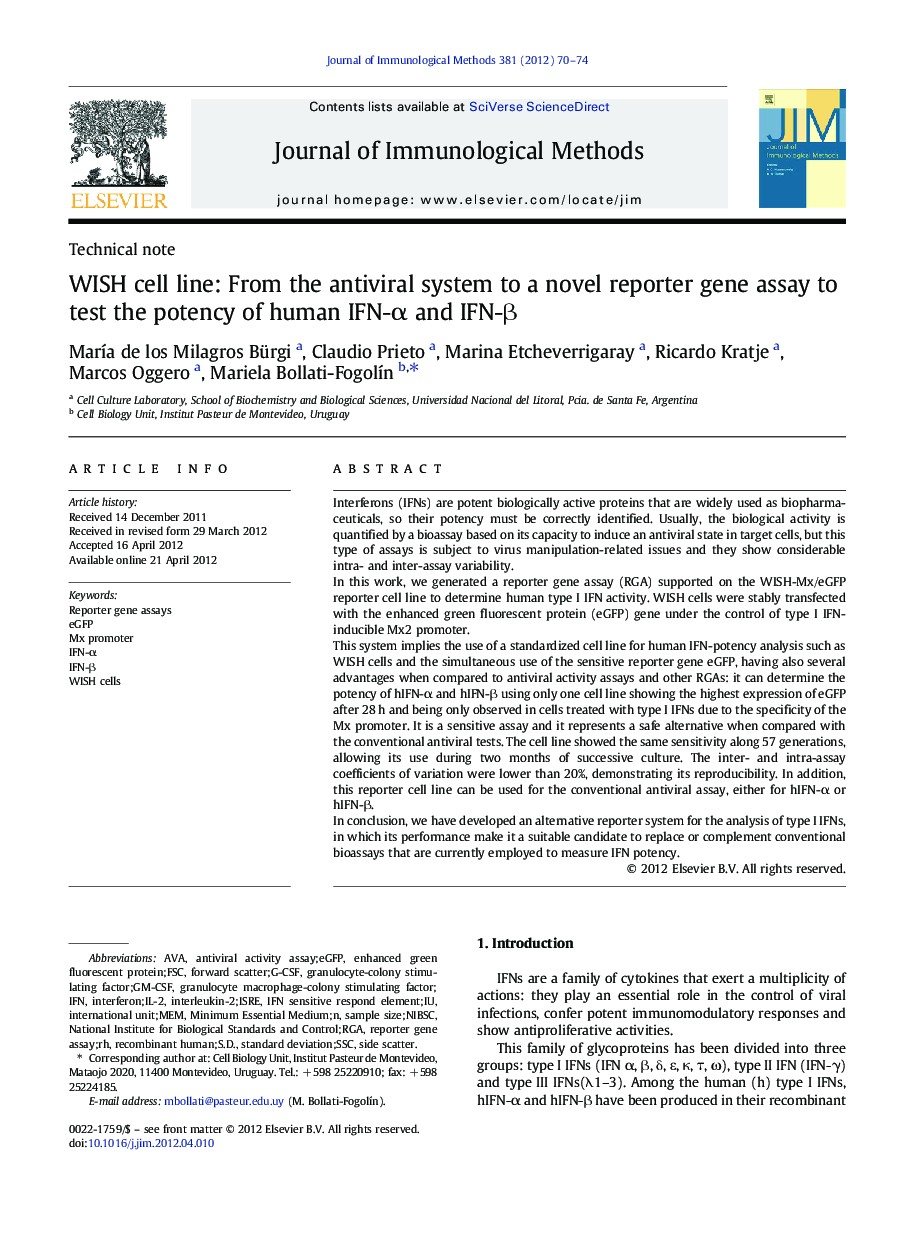| Article ID | Journal | Published Year | Pages | File Type |
|---|---|---|---|---|
| 2088386 | Journal of Immunological Methods | 2012 | 5 Pages |
Interferons (IFNs) are potent biologically active proteins that are widely used as biopharmaceuticals, so their potency must be correctly identified. Usually, the biological activity is quantified by a bioassay based on its capacity to induce an antiviral state in target cells, but this type of assays is subject to virus manipulation-related issues and they show considerable intra- and inter-assay variability.In this work, we generated a reporter gene assay (RGA) supported on the WISH-Mx/eGFP reporter cell line to determine human type I IFN activity. WISH cells were stably transfected with the enhanced green fluorescent protein (eGFP) gene under the control of type I IFN-inducible Mx2 promoter.This system implies the use of a standardized cell line for human IFN-potency analysis such as WISH cells and the simultaneous use of the sensitive reporter gene eGFP, having also several advantages when compared to antiviral activity assays and other RGAs: it can determine the potency of hIFN-α and hIFN-β using only one cell line showing the highest expression of eGFP after 28 h and being only observed in cells treated with type I IFNs due to the specificity of the Mx promoter. It is a sensitive assay and it represents a safe alternative when compared with the conventional antiviral tests. The cell line showed the same sensitivity along 57 generations, allowing its use during two months of successive culture. The inter- and intra-assay coefficients of variation were lower than 20%, demonstrating its reproducibility. In addition, this reporter cell line can be used for the conventional antiviral assay, either for hIFN-α or hIFN-β.In conclusion, we have developed an alternative reporter system for the analysis of type I IFNs, in which its performance make it a suitable candidate to replace or complement conventional bioassays that are currently employed to measure IFN potency.
► A WISH cell-based reporter assay was developed for the first time to test human IFN-potency. ► It implies the use of a typical AVA standardized cell line to analyze type I-IFN. ► The IFN-inducible Mx promoter and the sensitive reporter gene eGFP were used. ► This assay can quantify IFN activity in 28 h with a detection limit of 0.04 IU/ml. ► Thus, a single platform using AVA or RGA systems for type I-IFN potency was created.
